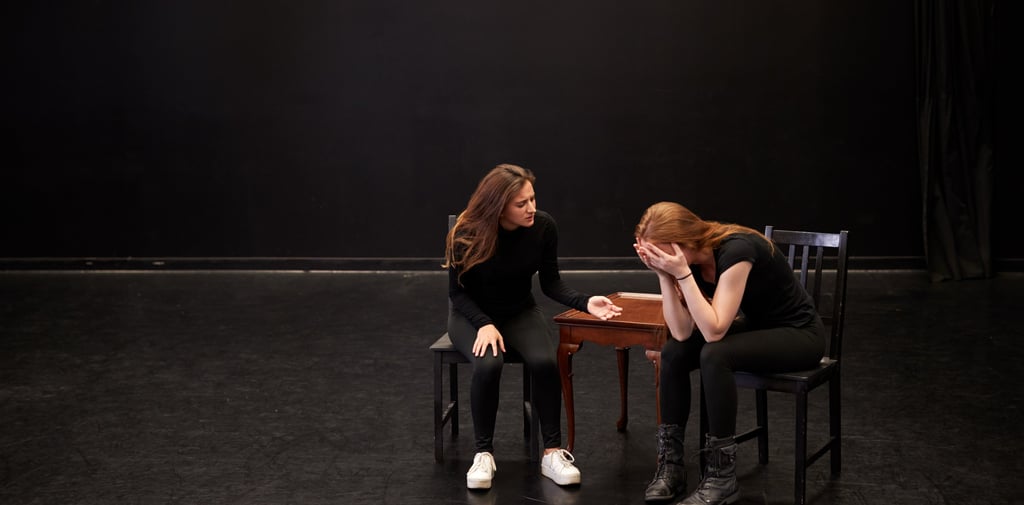The Scene Partner: How to Build Strong Actor Pairings in the Drama Classroom
Explore how scene partner projects build trust, collaboration, and performance skills in the drama classroom. Get practical tips for structuring scenes, fostering connection, and guiding student actors to success.
7/21/20252 min read


How I Structure Scene Partner Work in the Classroom
Every semester I teach, I make sure to include at least one Scene Partner Project—where students select a scene (or are assigned one), rehearse with a partner, and work toward a final performance.
Why?
Because learning to work with a scene partner builds so much more than acting technique. It cultivates:
Trust
Collaboration
Active listening
And essential communication skills that students will carry with them for life
That’s why I created my Acting Scene Partner Unit, drawing from my experience as both a teacher and former theater student. It guides students step-by-step through scene work in a way that builds strong partnerships and compelling performances.
Why Scene Partner Work Matters
When students work in pairs on a scene, they have to do more than memorize lines and hit their marks. They must:
Listen in the moment
React truthfully
Understand both their own character and their partner’s
Work together to shape blocking, objectives, tone, and timing
That level of collaborative creativity teaches them to be generous, responsive actors—and better teammates in general.
🎭 Scene Selection
When possible, I let students choose their scene and partner. This gives them ownership and buy-in. But sometimes, for balance or scheduling, I assign either the partner or the script—and that works, too.
Here are some trusted sources Free or Low-Cost Script Resources:
Stage Partners – Offers royalty-free classroom licenses and strong one-act options
Playscripts – Browse 10-minute and one-act plays; sample pages available
Theatrefolk – Scripts designed for middle and high school use
Dramatists Play Service – For more advanced or well-known works (purchase required)
New Play Exchange – Professional database of new scripts (ideal for honors or advanced classes)
Open Source Scripts – Royalty-free and public domain scripts
Build Trust Before You Rehearse
Before we jump into blocking or memorizing, I always do:
Scene partner warm-ups to build connection and trust
Character connection games so students understand their roles and relationships
Discussions on objectives, tactics, and emotional journey
Being “in the moment” as an actor doesn’t just happen—it comes from preparation, trust, and presence. Warm-ups help unlock that.
Character & Objective Work
Each student must know their:
Character's backstory
Motivation and objective in the scene
Obstacles and tactics
And crucially: they must learn to listen to their partner and adjust in the moment. That’s what creates performances that feel real instead of robotic.
Practice, Feedback, and Performance
Before we get to the final scene performance, students:
Present a practice performance to get over nerves
Receive peer and teacher feedback
Rehearse again with that feedback in mind
From day one, I give students a rubric with clear expectations, so they know what they’re aiming for. That includes:
Character believability
Use of space/blocking
Vocal choices
Listening and reactivity
📥 The full rubric, project breakdown, and warm-ups are all included in my Scene Partner Acting Unit on TPT.
Final Thoughts
When students dive into scene partner work, they’re not just becoming better actors—they’re learning what it means to collaborate, trust, and grow together through the creative process.
If you're considering adding this kind of project to your curriculum, I highly recommend it. And if you’d like a ready-to-use resource to get you started, check out my Scene Partner Acting Unit.
Want more tips and freebies? Get the Free Drama Teacher Toolkit to get regular updates and classroom support delivered straight to your inbox.
Happy teaching—and break a leg!
